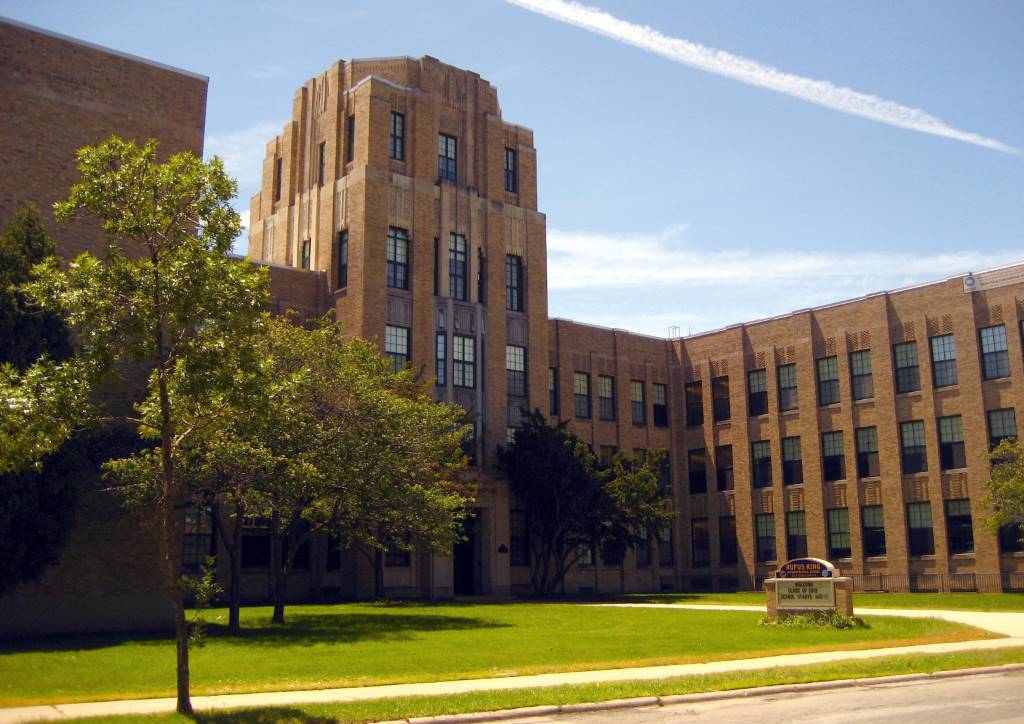School Spending Falls Below National Average
First time in modern memory. Driven by statewide salary, benefits decline.
As the school year begins, lawmakers have yet to agree on a new state budget for the next two years. Part of the reason for the delay is school funding, which is no surprise. School finance here is painfully complex, making it easy for politicians to manipulate school spending figures to score partisan points.
New federal data for 2015 provide a fresh look at K-12 expenditures here and elsewhere—without the “spin” in which Wisconsin politicians engage.
But even Census figures can be used selectively to tell contrasting stories about Badger State schools: Did per student spending on our schools ($11,375) dip slightly below the U.S. average ($11,392) for the first time in modern memory? Or has Wisconsin school spending—other than for fringe benefits—long been about average?
The answer to both questions is a qualified yes. Here’s the whole story.
Overall, Wisconsin schools have for many years spent more than the national norm. From 1992 to 2011, they collectively spent from 4.1% to 15.8% more per student than average. Reasons for the differences vary, but one factor dwarfs all others: fringe benefit costs.
Per student spending here was $11,774 in 2011 vs. $10,560 nationally, a difference of $1,214. Wisconsin schools spent $3,437 per child on benefits, $1,174 more than the nationwide average. When benefits are excluded from expenditure totals, per student spending here ($8,337) and nationally ($8,297) were nearly identical.
Following enactment of 2011 Act 10, requiring most public employees to pay a larger share of benefit expenses, fringe benefit costs in Wisconsin began to decline toward the national average. By 2015, benefit spending here had dropped from 52% to 5% higher than the U.S. average.
For the first time it was clear that, benefits aside, Wisconsin and the U.S. had long been devoting similar amounts per student to K-12 education.
The trend in per student spending could have had some adverse effects if staff-student contact had somehow suffered. However, staffing numbers for 2011 and 2015 show that not to be the case.
During this five-year period, both student numbers (-0.3%) and school staff (-0.7%) in the state changed little. Indeed, despite an overall staff decline, K-12 districts in Wisconsin actually added teachers (+1.3%) and teachers’ aides (+3.5%). As a result, student-teacher ratios improved from 15.1 to 14.9 to one, while rising nationally.
That is not to say that this commitment to preserving staff has not come without taxpayer effort. In many school districts, maintaining staff levels required voters to approve more spending—and higher property taxes—by referendum. Since 2011, more than 40% of districts have held referenda to increase operating spending. Voters have approved about 70% of those requests.
So, there it is―the complete story about school funding here and elsewhere. Ideologues will continue to squabble over K-12 expenditures. But might it be concluded that, other than fringe benefits, the Badger State’s financial commitment to schools has for some time been about average?
WisTax
-
22 Counties Trail State in Job Growth
![Marinette County Courthouse. Photo by Bobak Ha'Eri (Own work) [CC BY 3.0 (http://creativecommons.org/licenses/by/3.0)], via Wikimedia Commons](https://urbanmilwaukee.com/wp-content/uploads/2017/10/1024px-2009-0619-Marinette-Court-185x122.jpg) Oct 11th, 2017 by Wisconsin Taxpayers Alliance
Oct 11th, 2017 by Wisconsin Taxpayers Alliance
-
Local Government Finances Are Stable
 Sep 17th, 2017 by Wisconsin Taxpayers Alliance
Sep 17th, 2017 by Wisconsin Taxpayers Alliance
-
Yes, State Budget Is Late
![Wisconsin State Capitol. Photo by Rosina Peixoto [CC BY-SA 3.0 (https://creativecommons.org/licenses/by-sa/3.0)], from Wikimedia Commons](https://urbanmilwaukee.com/wp-content/uploads/2015/07/Wisconsin_State_Capitol_in_Madison-185x122.jpg) Jul 19th, 2017 by Wisconsin Taxpayers Alliance
Jul 19th, 2017 by Wisconsin Taxpayers Alliance























It would be nice to see a factual article about the love affair Wisconsin School Boards had with offering benefits rather than wages to save money on the payroll taxes. All this seems to be forgotten by people writing articles of opinion. Mean while, our friends, neighbors and family members working in the public sector have had these negotiated benefits from previous contracts taken away from them by our government. Like so many things that have disappeared in Wisconsin, good faith negotiations are a thing of the past.
The people would happily raise salaries and bennies for the Educrats if they were raising the reading/math scores. Some districts are disasters per Arne Duncan. Let the education lobby come up with answers then they get the money.
The fact that you think it’s that easy to turn around a large urban school district shows how completely ignorant you are even at your advanced age. Ask New Orleans and Newark how easy it is. Privatizing an entire district has been tried, and it did not work. Vouchers and charters have been tried and the results are mixed at the very, very best. So you can do what you always do and blame Democrats, but it’s not like Republicans haven’t had their chance. They haven’t achieved anything of note.
@WCD Right now the education lobby is the Bradley Foundation and its loyal contingent of legislators. Their idea of society is to have thousands of ideology driven schools to keep us divided and ignorant. How’s that working in the Middle East?
Great point Michael. The Bradley Foundation and its legislators in this state. In Michigan it’s the billionaire DeVos family.